Reviews of new Proton models within the last half-decade or so typically revolve around the ideas of “best effort to date”, “turn-around car for the company”, “make or break” and “this is a car it absolutely has to get right if it wants to move forward.”
For the new Proton Iriz, these clichés just couldn’t ring truer, and while I won’t give the game away so early on, suffice to say, our national carmaker is fully aware that indigenously researching and developing cars only for our own people is simply not enough, and the Iriz represents the brightest and most credible beacon of hope in that respect so far.
But at the same time, we’re talking about the Malaysian B-segment. Fiercely-competitive. High-volume. Price-sensitive. Numbers-driven. No-nonsense. And the baby Proton couldn’t be assigned a more formidable opponent even if it tried – why, only the best-selling set of wheels and default first car in Malaysia for the last nine years, the Perodua Myvi.
Yes, Proton has been talking about upping its game and going global since time immemorial – how is the Iriz any different? Well, we’ve just returned from Penang, having spent the best part of two days getting to know the new car, as well as the men and women behind it. So here we set about dealing with that question – the answer to which isn’t all that straightforward.
From our tireless and exhaustive coverage of the Proton Iriz, you know a great deal about the car already. You know there are two new variable-valve timing- (VVT) equipped engines, three trim levels and all the differences between them, plus a choice of five-speed manual and CVT gearboxes.
You also know the Iriz’s prices match those of the Myvi too closely for pure coincidence, which should banish all doubts regarding the model sitting squarely in the Proton’s crosshairs. But rather than merely benchmarking it against the Myvi, Proton has thrown in established European models like Ford’s Fiesta and Volkswagen’s Polo for good measure.
As such, the result is a car of a decidedly Continental disposition (with a few exceptions I’ll get to later), and this is evident even in its styling. It’s a good-looking car, with a distinct identity courtesy of the bold Proton-winged face, and pretty pleasing proportions.
Sophistication is to be found in many places, most notably in the human eye-shaped headlamps with their classy projector and ‘PROTON’-lettered internals, aeroblade wipers and wing mirrors on thick, solid stalks mounted on the doors (allowing the inclusion of front quarter windows).
Then there’s aggression – a good dose of it. The trapezoidal front intake and D-shaped side cut-outs containing either LED DRL strips or fog lamps are underscored by a creased double-layered splitter, which runs around the side of the car, creasing one more time beneath the upswept shoulder and swage lines, accompanied by a bulging sideblade that serves to break up the monotony of empty space.
The roofline culminates in an edgy double-vented spoiler (or a less ornate one on the 1.3 Executive) at the tailgate, which is itself set into a chamfered recess that serves to highlight the extended rear haunches that make the car appear squat and wide. The angular vertical tail lamps complement the overall design, too.
Above the rear number plate is a single straight crease, at the middle of which sits the reverse camera, and down below is an elaborate diffuser-like element containing reflectors and a rear fog lamp placement (for overseas markets). Not sure about the ‘Warm Grey’ bits in the 1.6 variants’ two-tone bodykit though; personally, I’d have it either body-coloured (as on the 1.3 Executive) or in plain black.
Step inside (doors shut with a clean, crisp thud – no, really) and you are greeted by an interior that isn’t exactly original, but well presented and screwed together. We’re sure you recognise elements like the fake stitching on the dashboard, row of buttons on the centre stack, triple-knob air-con controls and scuba-goggle instrument panel from other cars, but if they work well, why not?
There’s a significant improvement in perceived quality over the interiors of the Preve and Suprima S; the plastics, although hard, generally feel and look good, as do the finishes. Leather inserts, where available, are also well up to par. Even the sound of the doors locking and unlocking is nicely muted – not unlike what you’d hear in a European car.
Letting the side down somewhat are some of the switchgear, a good number of which are carried over from the Preve and Suprima S. These include the light and wiper stalks (stalk travels are a bit too long for ergonomic operation), engine start button and window switches.
These are still somewhat unrefined in their operation, and are at odds with the rest of the car. The air-con knobs turn with an audible rattle, and the typefaces used throughout are inconsistent – the bits borrowed from the Preve and Suprima S retain the block-like fonts, which clash with those used in the instrument dials, steering wheel buttons and air-con knobs. The difference is in the tiniest details, Proton – keep the fonts consistent!
It also has to be said that the instrument panel is small and located a bit too far from the steering wheel, which is tilt- but not telescopically-adjustable (in this class, only the VW Polo has telescopic adjustment). The speedo optimistically reads up to 240 km/h – here’s why – and the middle display shows a host of info including range, average and instantaneous fuel consumption, next service in time and distance, plus three trip meters, all of which are jogged through via a button at the end of the wiper stalk.
The display also shows alerts such as Key Not Detected (for keyless-equipped cars) and seat belt reminders. By the way, only the range-topping Premium has seat belt reminders for all seats (visual and audible alerts); the rest only tell the front passengers to buckle up. The little blank box beside the cubbyhole below the air-con controls is supposed to be a passenger airbag indicator for overseas markets – we don’t get that, neither can we disable the passenger airbag.
The speedo does not have a 110 km/h mark, making it difficult to ascertain on the move whether one is on the right or wrong side of the AES. Even more strangely, the rev counter has five marks between each 1,000 rpm. While that makes the third mark the halfway point, it means each mark represents a value of 166.67 rpm – hardly makes for accurate reading, does it?
Flick the lights on and the instruments gradually light up, with the needles glowing red – pretty cool. All window switches are backlit, too. But then the touch-screen dims to a default setting regardless of its previous brightness setting.
While we understand the intention to reduce glare at night, there are instances when we use lights in broad daylight (such as when it rains) and the default brightness setting is just too dim, making the screen difficult to see when the sun is up.
The 6.2-inch Android-based touch-screen (dubbed the Proton Infotainment System), standard on the 1.6 variants, works and responds well otherwise. Apart from the usual Bluetooth, DVD, USB, AUX and navigation (by Lokatoo), there’s even a built-in internet browser, and the system comes with a WiFi dongle. Also, the 2-DIN single-line radio on the cheaper variants manages not to look low-rent with its classy gloss black buttons.
I really like the seats, especially the leather ones – the backrests are nicely contoured and the bases long, providing good back and thigh support on long journeys. The side bolsters also do a good job of holding you in place in the bends.
The driver’s seat is height-adjustable across the range, but getting the recline angle right is strenuous – the lever is awkwardly located on the side of the backrest and it has to be pushed towards the rear of the car for the backrest to be unlocked.
Cabin practicality and convenience are pretty strong points, however. There are many storage areas of various sizes, and they’re all placed where you’d want them to be – under the driver’s side panel, on the centre stack and centre console, plus a tray ahead of the gear lever where you can place your phone while it’s charging through the sole 12V socket. On all variants but the 1.3 Standard, there are three USB sockets – one for audio and the other two (1.5A and 2.1A) for charging.
Instead of grab handles, the doors have pull recesses, which can be used to store small items, and the front passenger door armrest has a coin slot. Each door has a bottle holder, and on the centre console are three cupholders – two up front and one for the rear quarters. There’s a fold-away utility hook beside the glove box, a headrest hook on some variants and the Premium has pockets on the backs of its leather seats.
While the Iriz’s interior is more upmarket and sophisticated than that of its direct rival, it does lose out in cabin space, despite it being a bigger car all round and having a 115 mm-longer wheelbase. The biggest culprits are the dashboard and door cards, which extend quite a bit into the interior, nullifying its potential to offer more room. And of course, the Iriz has a higher centre console, whilst the Myvi’s automatic gear lever is dashboard-mounted to free up space.
It’s the same story at the back – while the Iriz’s rear seats have longer bases and more sculpted backs (also, three adjustable rear headrests on all variants but the 1.3 Standard), making them more comfortable, the narrower Myvi has noticeably more legroom and comparable head- and shoulder-room.
What’s more, the Perodua has a larger glass area, no thanks to the Proton’s upswept shoulder line. The latter does try, though – the front seat rails are mounted on raised plinths, allowing you to tuck your feet beneath, but this still doesn’t afford enough of an impression of space.
It’s not as if occupant space has been sacrificed for boot space either, for the Iriz holds 215 litres behind its tailgate – a mere seven litres more than the Myvi. Another point goes to the Myvi as unlike the Iriz, its rear seats can be folded flat by moving the seat bases forward.
The Iriz’s hatch sill is also a touch too high for easy loading, and despite the wide rear track, the aperture isn’t all that big (that chamfered section is perhaps partly responsible). The parcel shelf is also easier than the Myvi’s to remove and replace, but leaves a narrower aperture. However, the tailgate has an electrically-operated release which can be unlatched remotely by holding the unlock button on the key for three seconds. The Premium variant has keyless entry, allowing you to unlock the tailgate using the latch release button.
Finally, we get to the drive. 1.3 manual and 1.6 CVT powertrains were available on that day, spanning all trim levels. After an initial fuel consumption run (see results here), we set about dissecting the manual first.
Two things stood out almost immediately: ride comfort and refinement. The Iriz rides with the sophistication of a bigger car, isolating bumps, ridges and potholes enough to make you feel comfortable, but not so much as to deny you knowledge of the tarmac conditions beneath. Think Polo rather than Jazz and you’ll get the idea. Rebounds are brought to rest almost immediately, making the car feel planted and secure. Better in the front than in the back, though.
The other pleasantly surprising thing was the overall quietness. Given a Getrag five-speed manual, the 1.3 litre engine emits little more than a deep, distant and civilised hum in normal driving, without sounding harsh towards the further end of the rev range. Wind noise only becomes apparent beyond the national speed limit, and even then it’s not at all intrusive. Road noise could be better suppressed, however – the 1.3’s Silverstone Synergy M3 tyres are perhaps partly to blame.
The engine itself is not a particularly eager revver, but the gearbox does a great job of making use of the 94 hp and 120 Nm of torque on offer. The clutch pedal’s resistance is consistent throughout its travel, so even if you’re driving it for the first time, you can quickly ascertain the bite point and easily modulate the power delivery. The gearchange is slick and positive without being overly notchy. A delight to drive – throttle response, although short of the Myvi’s immediacy, is good, and progress can be made very swiftly indeed.
Unfortunately, this 1.3 manual is to the 1.6 CVT what Dr Jekyll is to Mr Hyde. The Punch-sourced CVT – for lack of a better verb – punches the 1.6 litre engine in the gut, undermining its 107 hp and 150 Nm of twist and thus, not making it feel much faster than the 1.3 manual. This is an improved ‘CVT2+’ unit over the CVT2 found in the Saga FLX, and while it’s better and more refined than before, it still falls short in areas.
The gearbox has a start-up clutch, instead of a torque converter as on the CVT used in the Honda City/Jazz. Pulling away from rest is somewhat unpredictable and difficult to modulate – sometimes you leap forward with more gusto than desired; other times it’s too slow off the line. Particularly hairy when you spot a break in traffic and want to pull out of a junction, for instance. Engaging the throttle maybe half a second earlier than you normally would seems to be the way around it, but you shouldn’t have to do that in the first place!
On the move, coax it by being gentle and progressive on the accelerator and all is well; demand more power in a hurry and the engine begins to get raucous. Floor it and you’ll be treated to a good earful of what a constant 5,500 rpm sounds like. The mid range isn’t so bad really, but the gearbox really does rob the motor of whatever spright it has. The ‘rubber-band’ characteristics rear their ugly head throughout – vehicle speed takes quite a while to catch up to engine speed.
And that’s not all – get off the throttle at low to moderate speeds and the revs settle at a boomy, drony 1,100 rpm that can resonate with the natural frequencies of some interior components. It’s not until you crawl to a halt that the revs return to idle. On the upside, the CVT does afford a semblance of engine braking that is very controllable. Perhaps a recalibration of the throttle to better suit the CVT could help, but ultimately, if you drive normally (as you do most of the time anyway) these niggles shouldn’t bother you too much.
The ZF-sourced electric power steering is dripping with feel and communication, weighting up very unartificially with speed and giving you confidence in the bends. It comes close to Fiesta levels of directness, and that’s king of the class here. Throw in a really well-sorted chassis, and we have a B-road belter on our hands. Body roll is present, but flex absent and grip levels high. Attempt to explore beyond the limits of adhesion and safe, neutral understeer happens, and you can feel it all coming through the helm. The general impression is of solidity, security and plantedness.
Of course, modern-day Protons have always had pretty good ride and handling, and we know why. But this time, the company says Lotus has very little involvement in the Iriz, which explains the lack of a Lotus badge on the car’s tailgate. Yup, the dynamics are brought to you by our own boys, and what dynamics they are – the Iriz absolutely shines in the twisty bits. I can so imagine the fun I’d have in a 1.6 manual, let alone a future hot R3 variant…
Proton touts better driver visibility by mounting the wing mirrors on the doors so there can be front quarter windows, but this doesn’t work so well in practice. The quarter windows are small, surrounded by thick A-pillars and too far forward from the driver. Consult them in an attempt to look out for oncoming traffic round the bend and all you see is the tarmac below. The brakes are good, although they call for a bit more pedal effort than you’d expect.
Highway driving is a tad more fatiguing than it should be. The steering wheel transmits some degree of vibration, perhaps a consequence of having too much feedback dialled in. A lack of on-centre accuracy also necessitates constant steering corrections to keep the Iriz in lane.
At a constant 110 km/h, corresponding revs are approximately 3,100 rpm for the 1.3 manual in top gear, and a lower 2,600 rpm for the 1.6 CVT, but the CVT’s drone is somehow more unbearable. While, as earlier mentioned, the Iriz’s overall refinement levels are comparable to those of its European classmates, they are if you keep the revs at an earthly bay. You have full control of the revs with a manual gearbox; with this CVT, much less so.
On to safety, and you know the deal. The hot press-formed Iriz has a five-star ASEAN NCAP safety rating, and stability control, ABS, EBD, Hill Hold Assist, rear seat Isofix, Impact-Sensing Door Unlock (doors unlock automatically in the event a crash) and dual airbags are standard across the range, with the Premium variant getting six airbags.
This is very impressive indeed, especially the fact that all variants get stability control, and to drive the point home, Proton even took the liberty during the event of conducting a demonstration of the safety feature through an emergency double lane change manoeuvre. Suffice to say, stability control can help you avoid losing control of your car and possibly ending up in an accident. If it has the potential to save human lives, how much more important can it get?
Truth be told, in writing this review of the Proton Iriz, I may have been nitpicking a little, because this is truly our national carmaker’s most complete indigenous product so far. It has the most potential of any Proton I know; yet there exist imperfections that prevent it from being the car it can be.
On a global scale, the Iriz is among the most well-prepared Malaysian efforts where cars are concerned. Not only does it already pack the required safety equipment (and promise a host of next-level ADAS active safety systems), its engines have been designed to Euro 5 standards (although ours have been detuned to Euro 4 because of our lower fuel quality).
Additionally, provisions have been made for additional features to be easily introduced. It’s barely been a month since its launch, and already we know of plans to have diesel, hybrid and electric powertrains. Whether all these can be done in time, of course, is another story.
And because of its strong global outlook, the Iriz offers Malaysians much more of a car than they actually want, which oddly, may not be in its favour. It’s a safer, better-equipped and more sophisticated offering than the Myvi, for the same money, and just about up there with higher-priced rivals.
But sophistication can be a deterrent to the average Malaysian – more things to go wrong, they always say – and how Proton’s new baby fares down the road in terms of reliability and durability needs time to tell.
For now, the Proton Iriz could be just the thing for a maturing car market – if that market is indeed ours. It rides and handles exceptionally well (stick to the manual, enthusiasts), offers decent enough space, much improved perceived quality and a highly-commendable safety arsenal. And really, isn’t it a looker.
Proton Iriz 1.6 Premium CVT
Proton Iriz 1.3 Executive MT
AD: Drive the Proton model of your dreams. Submit your details and Proton PJ will get in touch with you.
Looking to sell your car? Sell it with Carro.

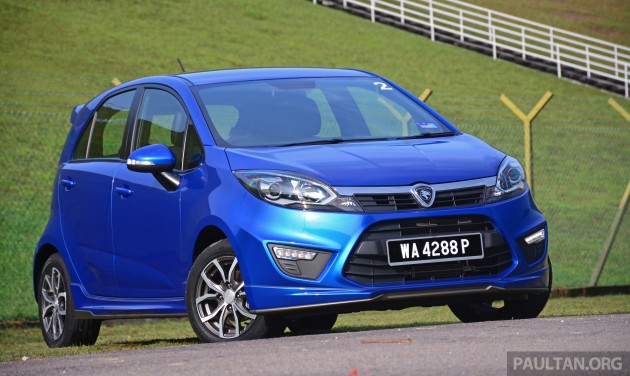
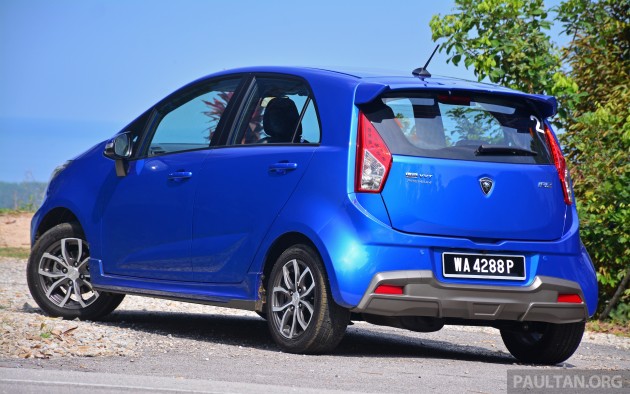



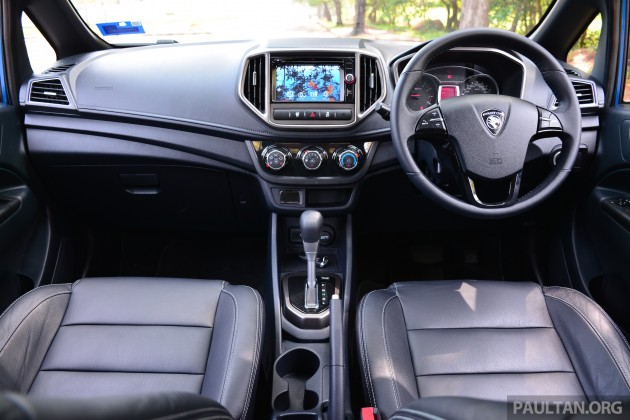











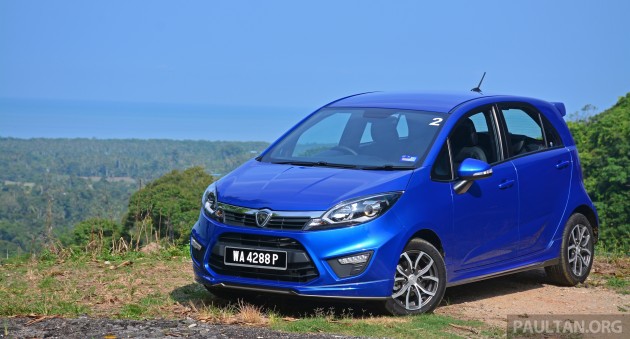
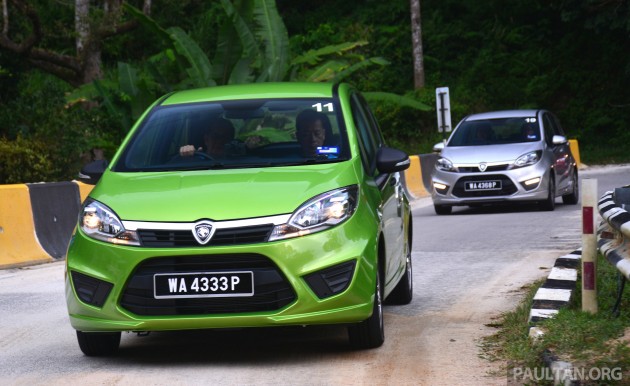





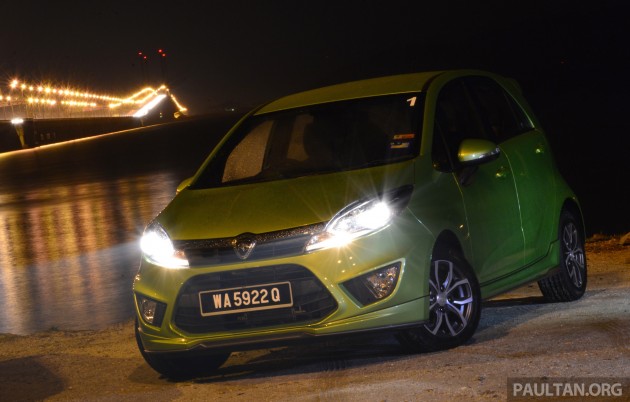
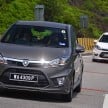

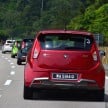


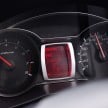


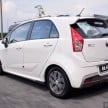
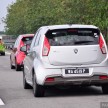
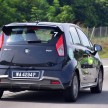
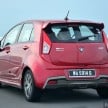
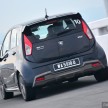
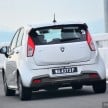
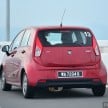
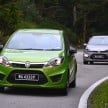
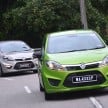
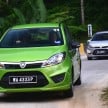
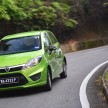
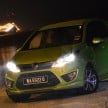
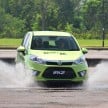


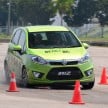

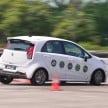
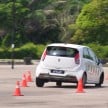
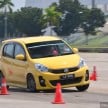
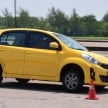
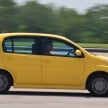
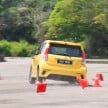
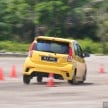
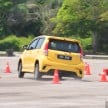
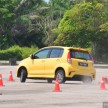

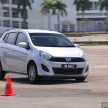
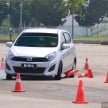

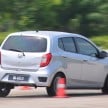


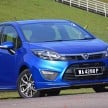
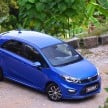
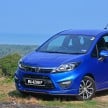

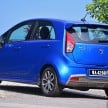
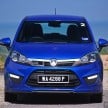
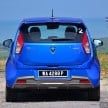
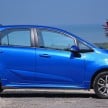
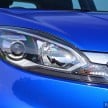
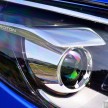
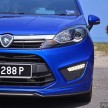
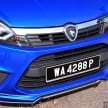

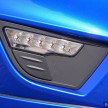
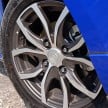

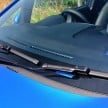
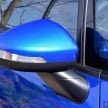

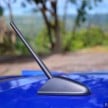
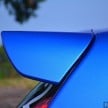
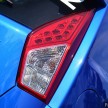
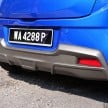
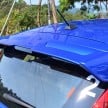

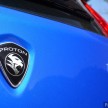
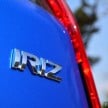
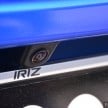
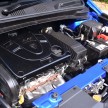
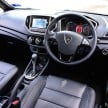
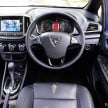
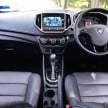
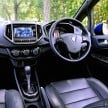
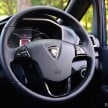
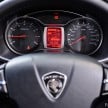
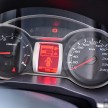
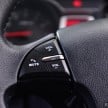
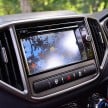
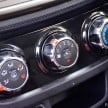
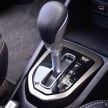
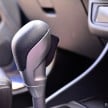
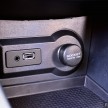
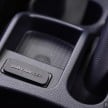
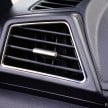


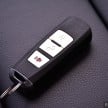
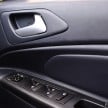
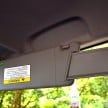
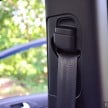
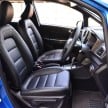
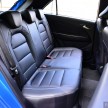

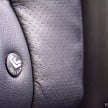
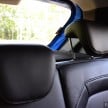
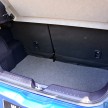
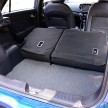
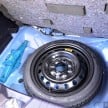
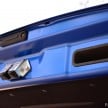
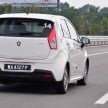
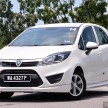
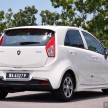
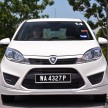
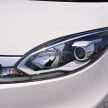

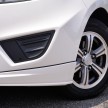
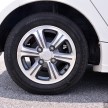
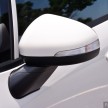
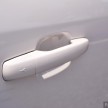
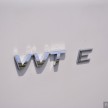
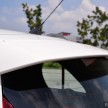
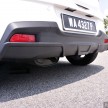
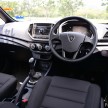
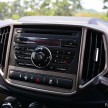
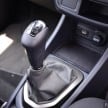
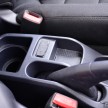
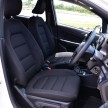
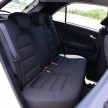
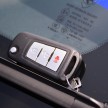


















AI-generated Summary ✨
Comments show strong support for the Proton Iriz, praising its safety features, interior quality, and driving performance, especially the manual 1.6 variant which many find fun and well-built. There is recognition of Proton's improvements in design and safety, though criticisms remain about the CVT transmission's noise, refinement, and operational quirks like hill starts, reflecting concerns over long-term durability. Some commenters compare the Iriz favorably to competitors like the Myvi, Fiesta, and Jazz, emphasizing its solid build and advanced safety tech. Off-topic discussions about Proton’s economic impact, government protection, off-brand perceptions, and off-topic controversies are filtered out, focusing the discussion on the car’s features, performance, and market perception, with overall sentiments leaning positively but noting areas for future refinement.